Inhale, Exhale: A Respiratory Disease Photo Quiz
Primary care physicians treat the majority of patients with respiratory diseases, where diagnosis often depends on early recognition of suggestive symptoms. This week’s photo quiz offers several presentations to test your knowledge.
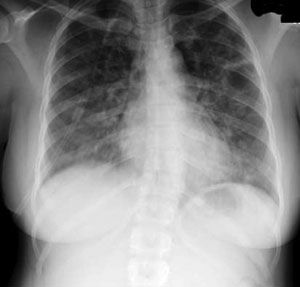
Question 1:
A 43-year-old woman presented with severe dyspnea, wheeze, and cough. She had a previous diagnosis of asthma and a 30-pack-year smoking history. A low-power view of a biopsy specimen showed a terminal and a respiratory bronchiole surrounded by scar tissue and alveolar septal thickening. Brown pigmented macrophages abundant in the air space adjacent to the affected bronchioles led to the diagnosis.
NEXT QUESTION »
For the discussion, click here.
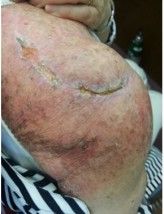
Question 2:
An 84-year-old woman presented to the ED with progressive dyspnea and hypoxemia. Her oxygen saturation was 84% on room air, and the rest of her vitals were within normal limits. She had a dry, nonproductive, hacking cough for a few months without hemoptysis. She had had squamous cell skin cancer of the right shoulder and had surgical excision followed by radiation therapy. She had radiation-induced lung injury.
NEXT QUESTION »
For the discussion, click here.
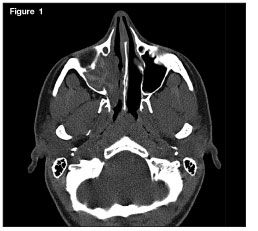
Question 3:
An 18-year-old woman with a history of allergic rhinitis and moderate persistent asthma presented with right-sided nasal congestion of 6 months’ duration. A CT scan showed complete opacification of the right maxillary sinus with increased attenuation of the mucin. Allergic fungal rhinosinusitis, the most common form of noninvasive fungal sinusitis, was the diagnosis.
NEXT QUESTION »
For the discussion, click here.
For the answer, click here.
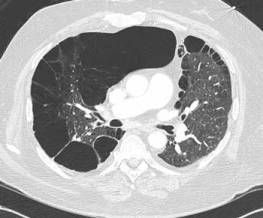
Question 4:
A 54-year-old man presented with a sudden onset of palpitations. His history included stage IV renal cell carcinoma, end-stage COPD, NYHA class IV heart failure, recent pulmonary embolism, and ongoing tobacco abuse. Cardiac examination revealed atrial flutter and a rapid ventricular rate. A CT scan of the thorax was ordered to help determine whether a recurrent pulmonary embolism may have contributed to the arrhythmia.
NEXT QUESTION »
For the discussion, click here.
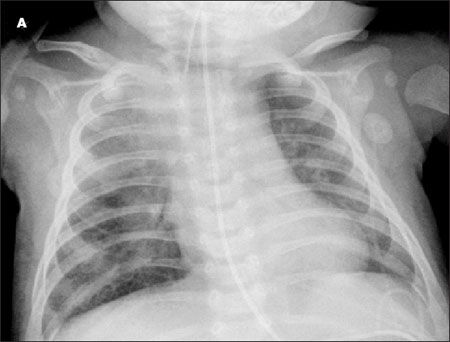
Question 5:
A 10-week-old girl with a history of difficulty in breathing presented with stridor, tachypnea, wheezing, and increased work of breathing. A chest radiograph showed a hyperinflated right lung with a shift of the mediastinal contents into the left hemithorax. A chest CT scan showed diffuse mediastinal and right hilar adenopathy. The infant received a diagnosis of pulmonary tuberculosis.
NEXT QUESTION »
For the discussion, click here.

Question 6:
This lung biopsy specimen shows loosely formed granulomas near the terminal bronchioles and lymphocytic and plasma cell infiltration of the alveolar walls. Chronic interstitial pneumonia, loose granulomas, and areas of organizing pneumonia are consistent with drug-induced hypersensitivity pneumonitis.
ANSWER KEY »
For the discussion, click here.
ANSWER KEY:
Question 1. A
Question 2. D
Question 3. C
Question 4. C
Question 5. E
Question 6. E